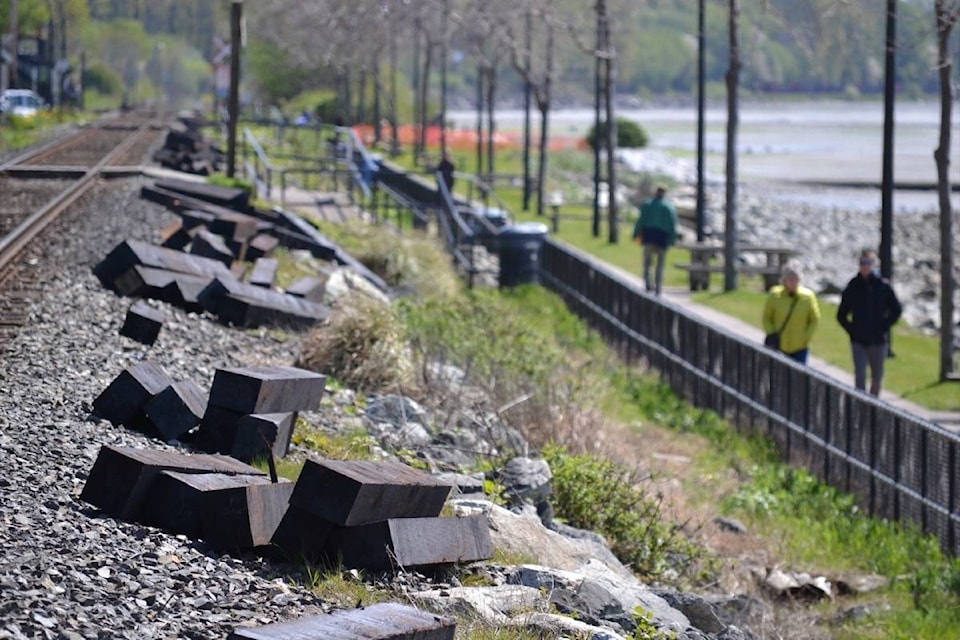Editor:
Re: BNSF to replace railway ties, April 28.
Thanks for your article about the railway-tie replacement.
The info was interesting and informative, but I was surprised you did not include who would be doing the work replacing the ties. Would they be American or Canadian workers?
In view of U.S. President Donald Trump’s recent edict that all possible U.S. labour work be done by Americans – “America first” – I certainly hope that we would insist that this work by a U.S. railway on Canadian soil be done by Canadian workers. Is this the case?
Secondly, two letters in the same edition raise the issue of the railway ties may be of the old-fashioned, polluting creosote type, rather than something more environmentally safe. Was there a Canadian ‘environmental requirement’ approval that BNSF needed, to be allowed to use any type of environmentally harmful material in front of many kilometres of our coastal waterfront? I would certainly hope so.
As you may see, there are more questions on this important subject that need to be answered; hopefully before the work is done. I think many would like to know answers to these questions.
Jim Bloye, Surrey
• • •
Re: Railway work must be opposed, April 28 letters.
Let me remind those who have written to oppose BNSF’s tie-replacement program that the work is not done for frivolous reasons, rather it is necessary to replace decayed and damaged ties in order to keep the track in a sound condition.
What these correspondents appear to be demanding is that essential maintenance be ignored and the railway be allowed to deteriorate to a less safe condition, while carrying thousands of railcars containing dangerous goods through their community each year. Instead, perhaps they should give thanks that BNSF is diligent about safety.
The wood, which is treated with creosote or other preservative to retard the onset of decay, poses no risk. Any claims to the contrary are not based on fact, and I say that from a lifetime of professional responsibility for these and other railway environmental issues. The statement that wood ties are inferior to concrete ties is also false, as wood continues to be the material of choice for many railways around the world for entirely sound reasons: concrete is rigid and subject to brittle failure, but wood is tough and resilient.
Also, contrary to one writer’s assertions, the creosote in ties does not leach to any significant extent, as scientific studies have shown that the preservative does not migrate more than a few centimetres from the tie’s location in the track structure. Furthermore, special permits are not required for disposal of scrap ties, as treated wood is not considered by the regulatory agencies to be a hazardous waste. Just don’t smoke it or eat it and both you and the environment are at no risk.
John Brodie, Surrey
